Delhi is often called the heart of India for its history, culture and traditions which date back to centuries. Every ruler or king has tried to shape this city in his own aura and prestige. Much of that still remains.
With growing industrialization and subsequent migration of rural populace to derive their chunk of livelihood in the metropolitan capital, Delhi has absorbed India’s diversity and realities like no other city. Precisely why a super-fast metro rail snaking through the heart of Delhi runs parallel with the city’s reality of impoverished and homeless. It won’t be hard to find a multi-crore luxury car and a hungry beggar standing next to it.
This is Delhi. A state of indifference and rampant urge to pounce upon every bit, with almost no care for environment and people of the ‘other class.’
ScoopWhoop Photojournalist Ahmed Kamal Saifi takes you through a journey in South Delhi district’s Okhla region where a slum on the banks of Yamuna is home to heaps of filth and lives of several hundred migrants who earn from it. At the centre of the slum are the lives of children whose only world to live, dream and die is a world of garbage and filth.
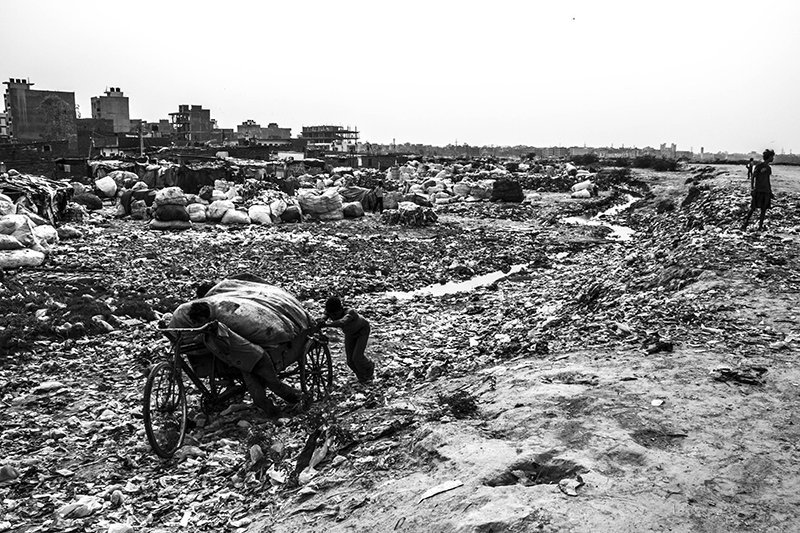
Three children of Okhla slum push their cart through garbage-strewn road to unload their day’s collection from various localities of Delhi. ScoopWhoop/Ahmed Kamal Saifi
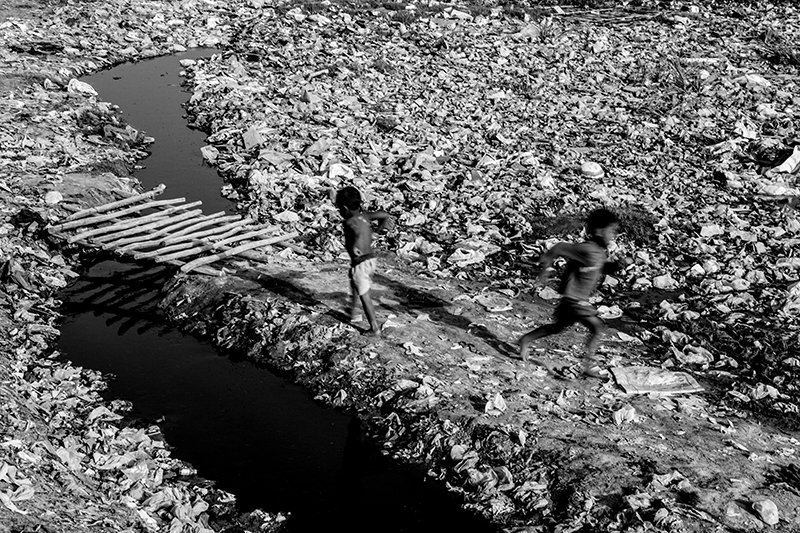
Most of the slum children earn their livelihood from sifting through their daily garbage collections to take out scrap metals and plastics which they sell to feed their stomach and families. ScoopWhoop/Ahmed Kamal Saifi
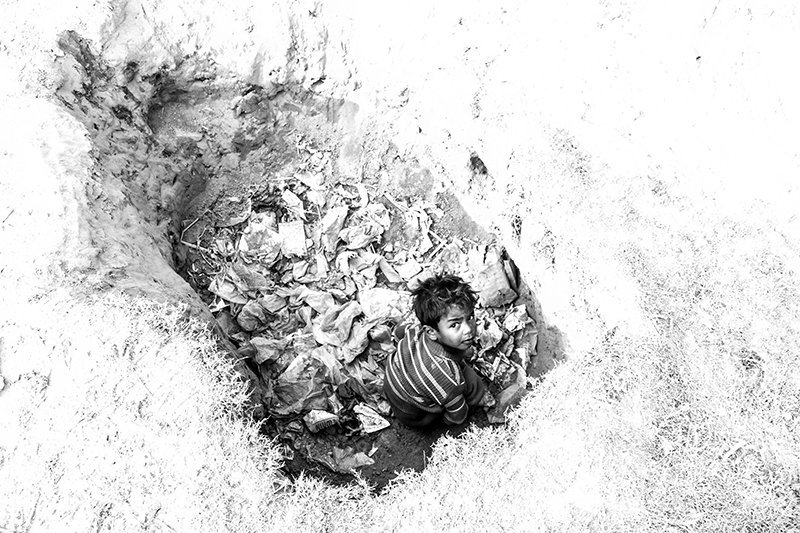
With almost no traces of houses or any concrete establishments for their shelter, the slum dwellers dig up pits to relieve themselves. ScoopWhoop/Ahmed Kamal Saifi
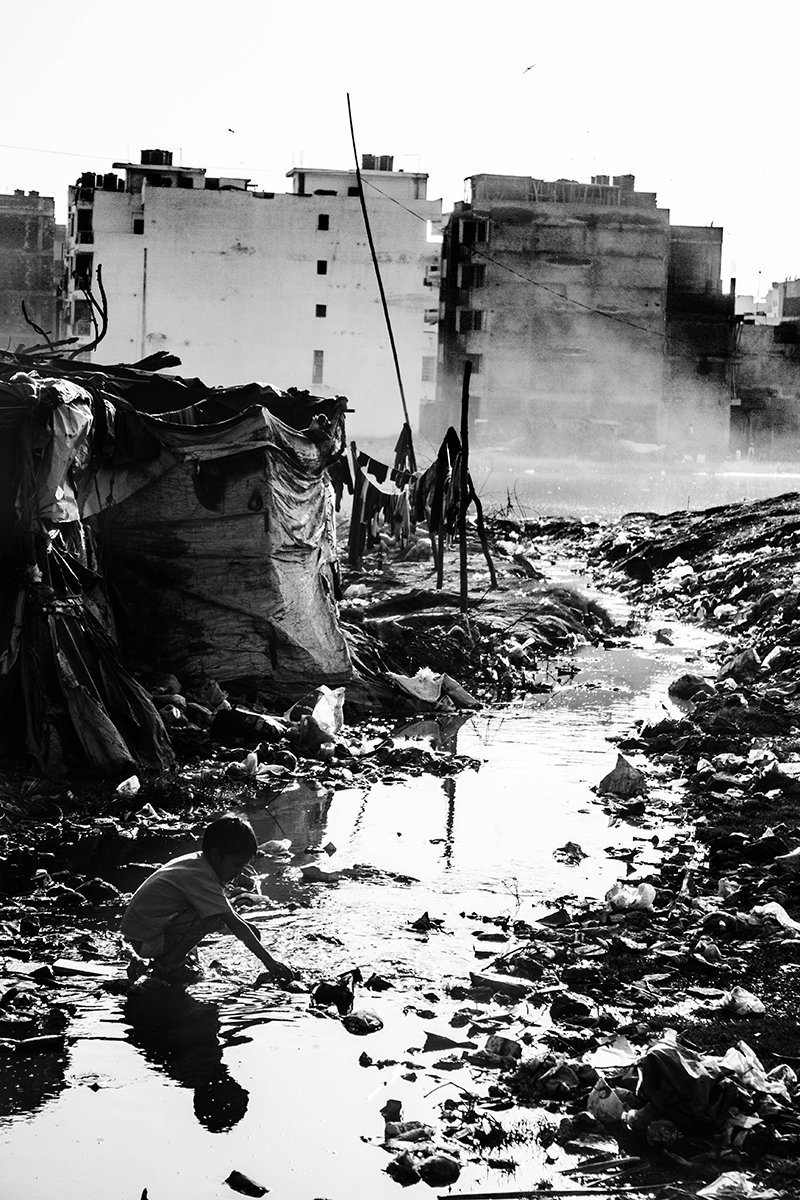
Like every slum in the world, the struggle for existence starts too early for children living here. In this picture, a child is seen playing in the dirt-filled stream meandering through the slum outside his home of polythene and bamboo sticks. ScoopWhoop/Ahmed Kamal Saifi
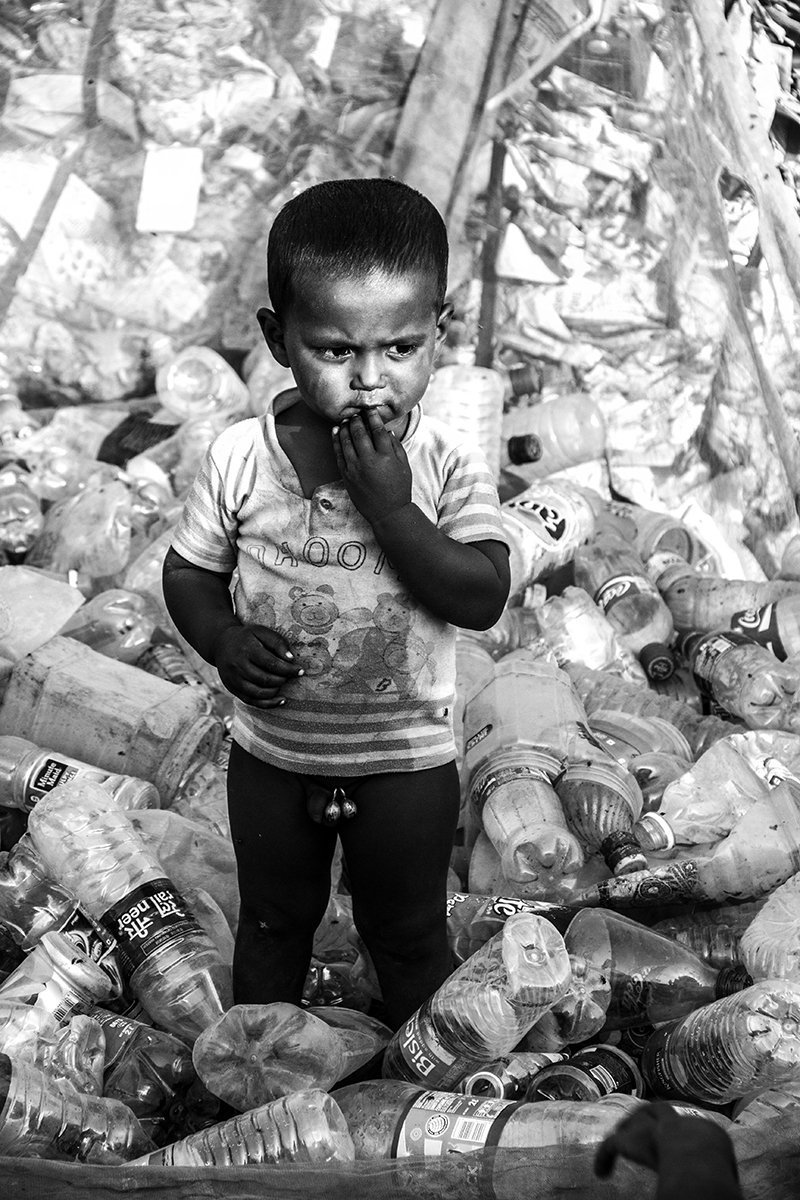
A half-naked child is surrounded by heaps of plastic bottles collected and then sifted by his brothers (not in picture) for selling in the market. ScoopWhoop/Ahmed Kamal Saifi
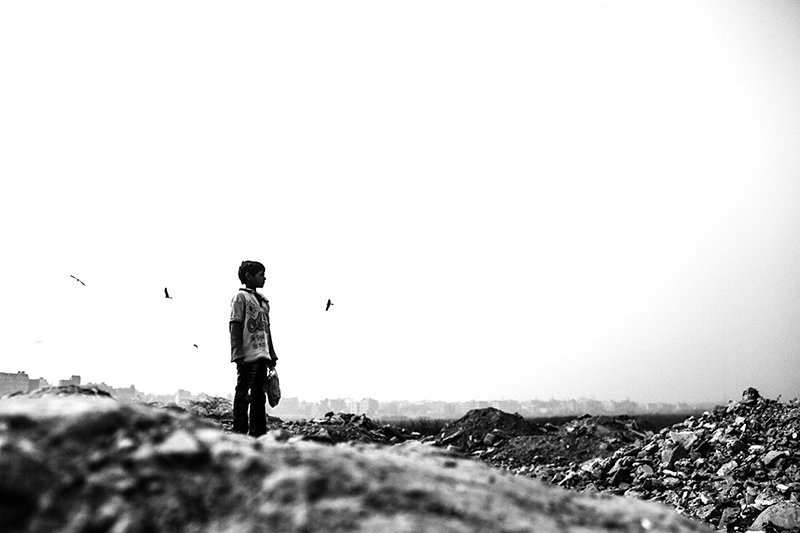
A boy looks towards Yamuna river bank, scanning for a scrap metal or any sale-able object. Years of garbage dumping and unabated flow of sewage in the famous river has resulted in an inflow of increasingly high-levels of lead and other harmful chemicals in Yamuna’s water. ScoopWhoop/Ahmed Kamal Saifi
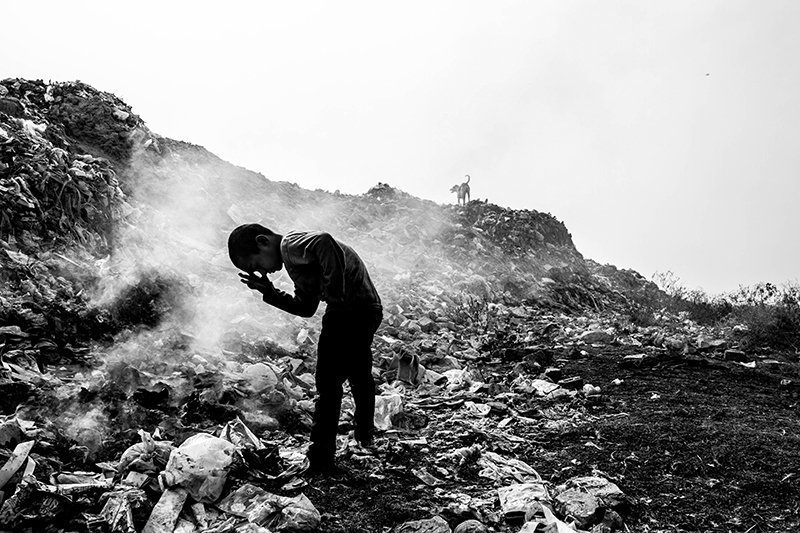
One of the main techniques of extracting metal from plastic-covered objects and scrap is by burning down the object, which results in the release of toxic smoke, often unbearable for the person who doesn’t live here. In the picture is a boy, who ducks to avoid smoke, while the fire envelops the plastic object to unravel the metal inside it. ScoopWhoop/Ahmed Kamal Saifi
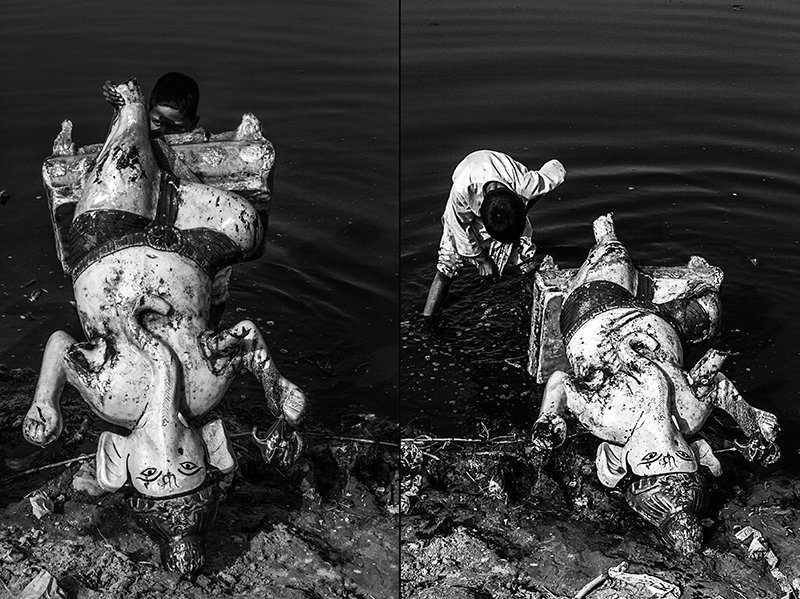
Many children in these slums quite passionately follow religious festivals which mark the pushing of Hindu God idols in the river. For these children, a small nut or bolt or even a light-weight metal rod inside an idol is of value. ScoopWhoop/Ahmed Kamal Saifi
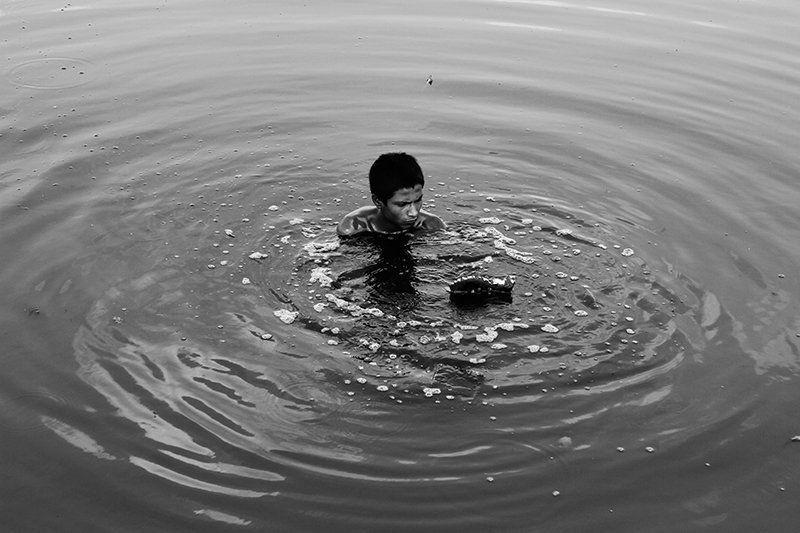
A boy takes a dip in water to search for any matter-of-value in a Hindu God’s idol in Yamuna river. ScoopWhoop/Ahmed Kamal Saifi.
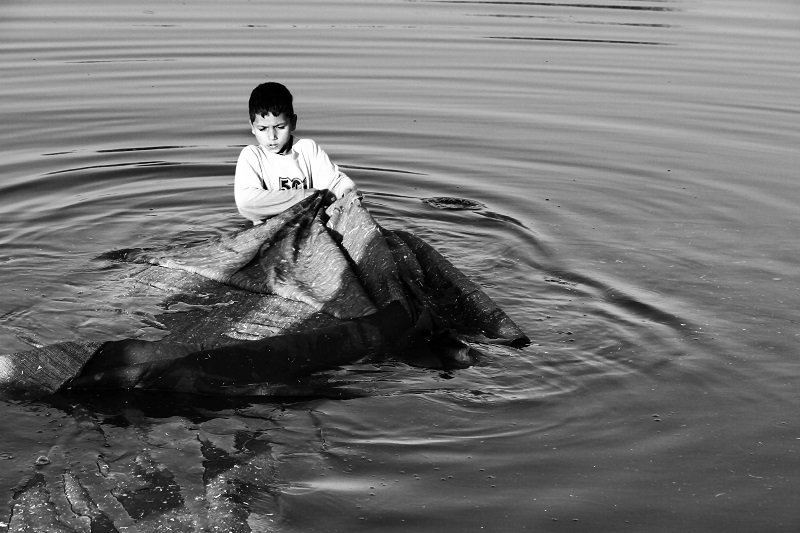
A child struggles with a long carpet which he tries to wash for a mere amount of Rs 5-10 each. Usually, the carpets come from marriage arrangement camping agencies and contractors. Undoubtedly, the children are exposed to the harmful and chemically toxic water for hours at a stretch. ScoopWhoop/Ahmed Kamal Saifi
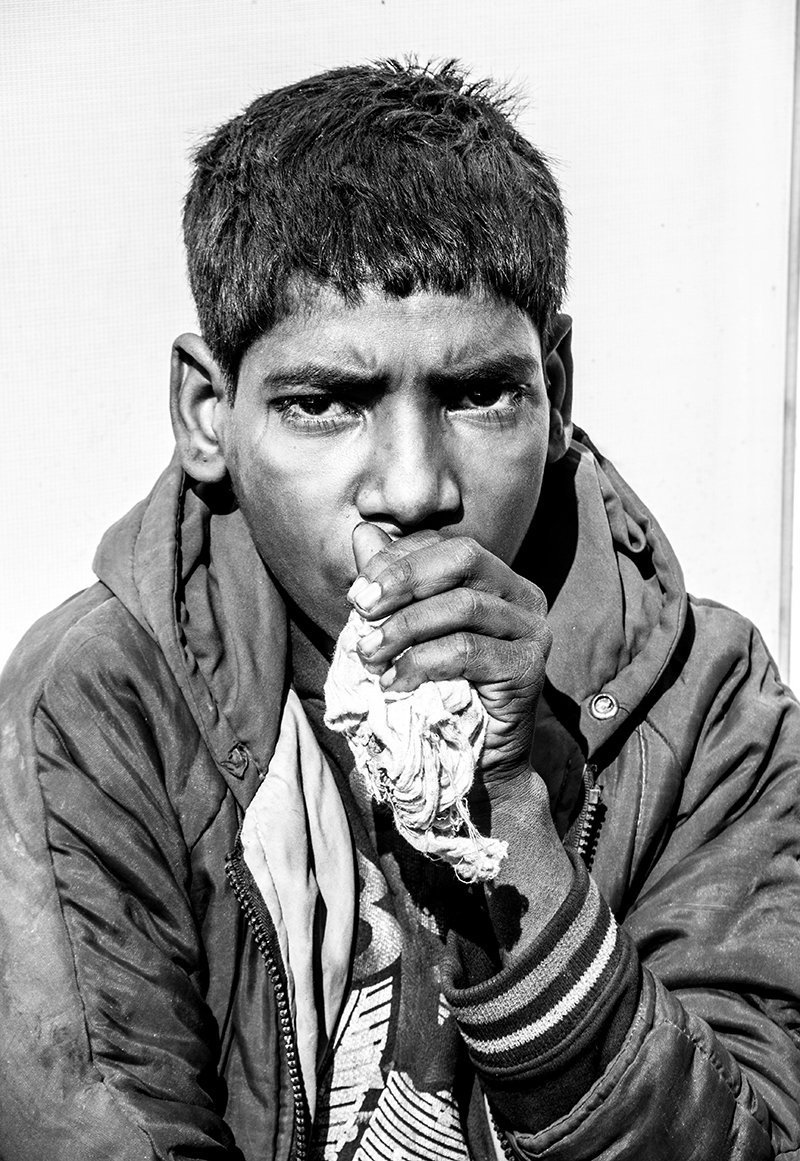
With deplorable living conditions, no sanitation, absent health care and lack of education, a lot many children have taken up drugs and other substances to take what they call ‘Mazaaa’ of life. The picture shows a boy snorting some synthetic chemical. ScoopWhoop/Ahmed Kamal Saifi
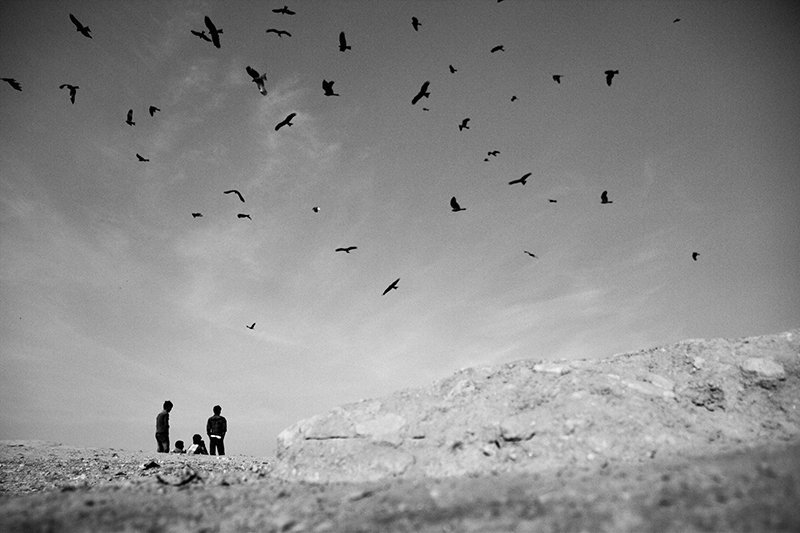
Eagles prowling for any dead animal or food substances fly over a group of slum children who are playing cards (not in picture). Gambling is one of the major sources of entertainment and earning for these children who usually earn less than a dollar a day or nothing, depending upon their luck of finding something saleable. ScoopWhoop/Ahmed Kamal Saifi
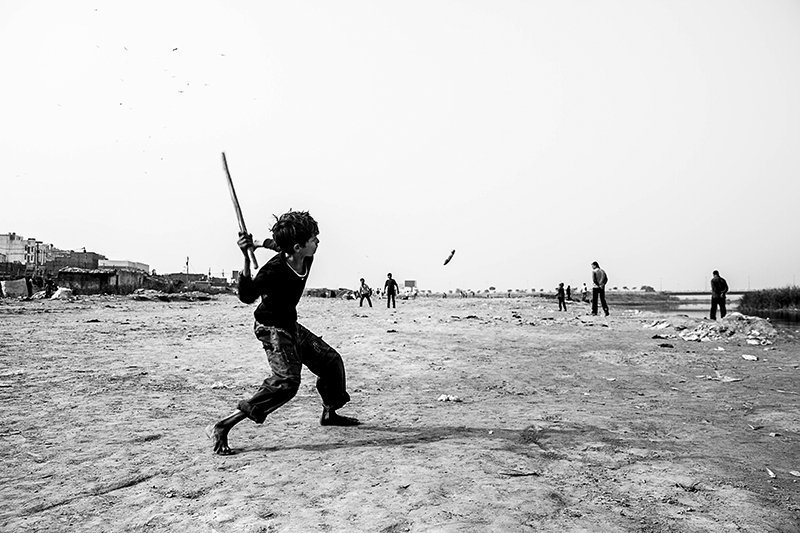
Traditional games like ‘Gilli-Danda’ also bring joy to these children, whose future looks as bleak and dark as the surroundings. ScoopWhoop/Ahmed Kamal Saifi
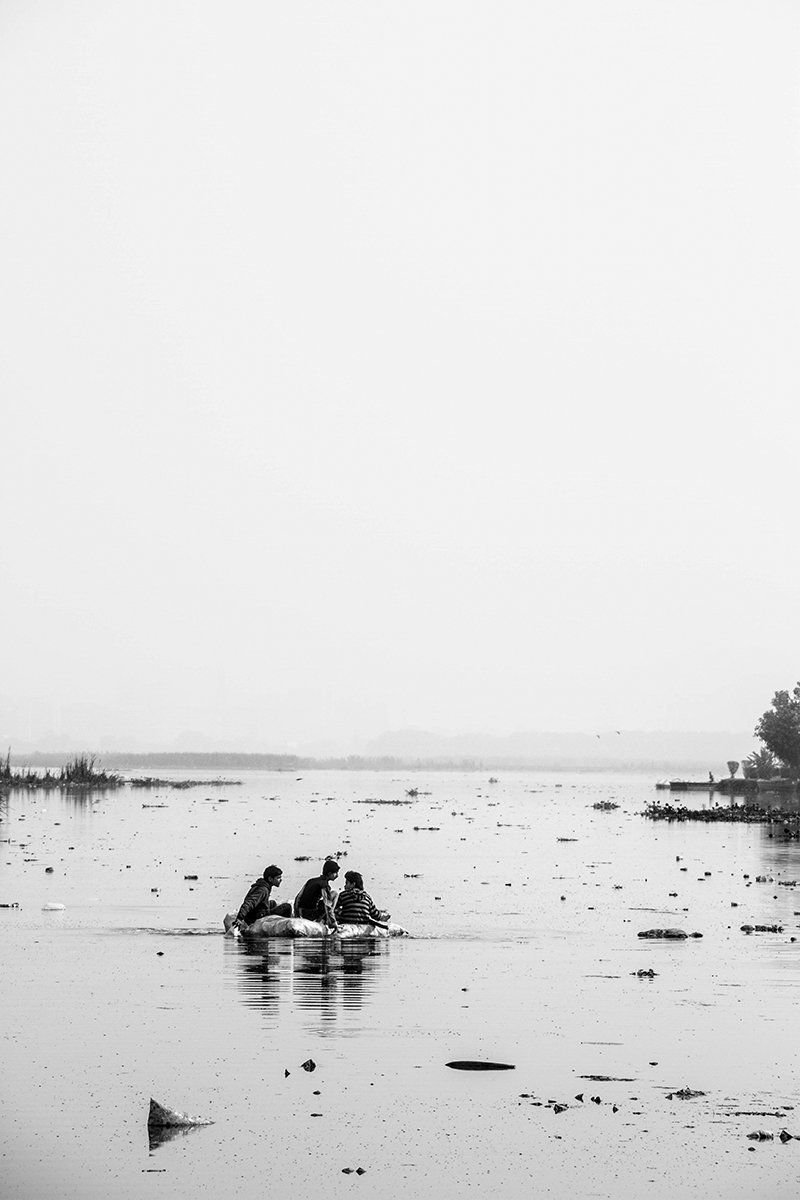
Riding on a make-shift raft of tied-up plastic bottles and synthetic bags, a group of several slum-dwelling children wade through Yamuna river. The boys say, they do it for their leisure and to be happy. ScoopWhoop/Ahmed Kamal Saifi
Feature image source: ScoopWhoop/Ahmed Kamal Saifi

















